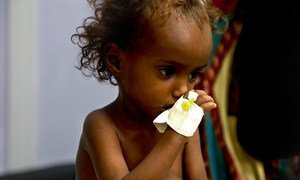UN health agency spotlights stalled effort to close health divide across Europe, in new report

A woman receives medical care at a family health clinic in Bosnia and Herzegovina. (file)
10 September 2019
Progress on equal access to a healthy life for all, is at a standstill across Europe, a new report by the World Health Organization (WHO) revealed on Tuesday, despite their being a clear path to close gaps in national care.
In the first-ever report of its kind, The Health Equity Status Report, authors share that in many of the 53 countries in the WHO European Region, the status of health equity has either gone unchanged, or worsened, despite government efforts to address avoidable disparities.
These challenges could be overcome “even within the lifetime of a national government of four years” said Dr. Zsuzanna Jakaba, WHO Europe’s Regional Director.
“For the first time, the Health Equity Status Report provides governments with the data and tools they need to tackle health inequities and produce visible results in a relatively short period of time,” she explained in a press statement.
Health equity, which the healthy agency defines as “the absence of unfair, avoidable differences among groups of people”, implies that ideally everyone should have an opportunity to attain their full health potential.
The Report also highlights new and emerging groups at risk of falling into health inequality, and breaks down drivers of health inequality into five factors:
- Income insecurity, accounting for 35 percent of the burden of inequity.
- Poor living conditions, contributing 29 percent.
- Around 19 percent can be attributed to social factors including feelings of isolation and resistance to ask for help.
- Access to good quality service, accounts for 10 per cent.
- And seven per cent is down to employment insecurity.
Dr. Jakaba said the Report explains how to achieve health equity and bring “positive change” to the European region.
“Through this effort we can achieve the Sustainable Development Goals (SDGs), particularly Goal 10 on reducing inequity—the only goal which is not improving in our region,” he maintained.
On 23 September, kicking off the General Debate among UN Member States in New York, a high-level meeting on universal health care (UHC) will be held at the UN General Assembly. Heads of State, political and health leaders, policy-makers and UHC champions will come together to advocate for health for all.
Key findings on current health trends across the region depict a serious health divide:
· Life expectancy for both men and women had increased by 2016, yet social disparities can cut a woman’s life expectancy up to 7 years, and a man’s up to 15, if they are in the most disadvantaged groups.
· In the least affluent 20 per cent of the population, nearly twice as many women and men report illnesses that limit daily activities than those in the most affluent 20 per cent.
· In 45 of 48 countries providing data, women with fewest years of education, report higher rates of poor health compared to the most educated.
· Accumulated poor health status of those with fewer resources, predicts a higher risk of poverty, social inclusion, loss of independence and more rapidly declining health.
· A full list of emerging patterns is available here.


No comments:
Post a Comment